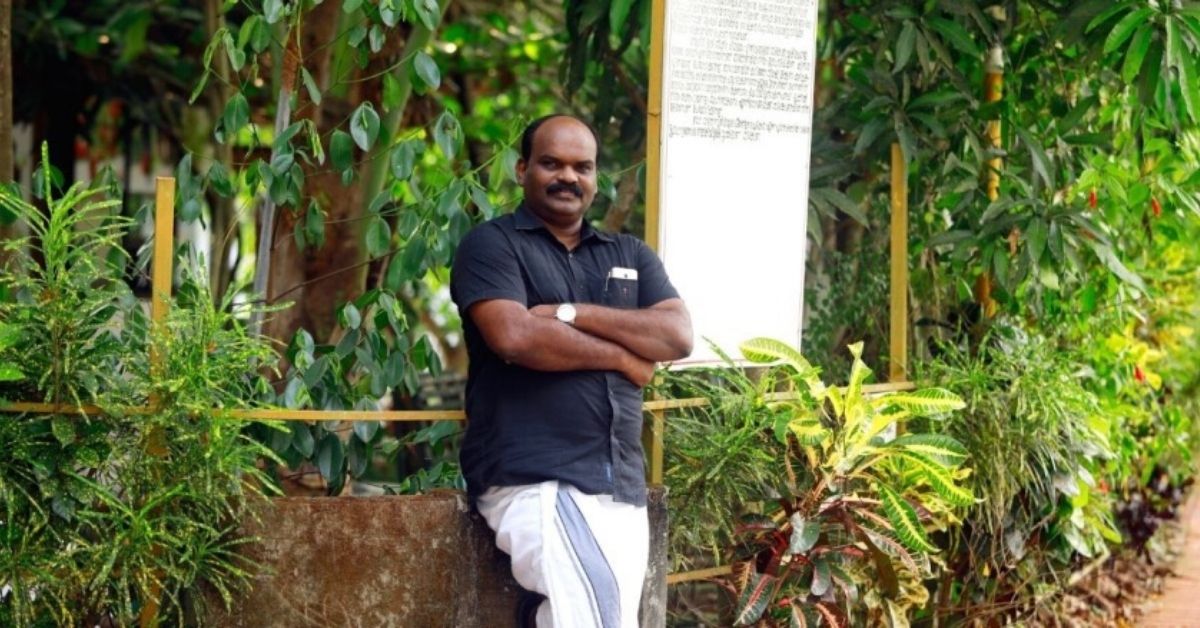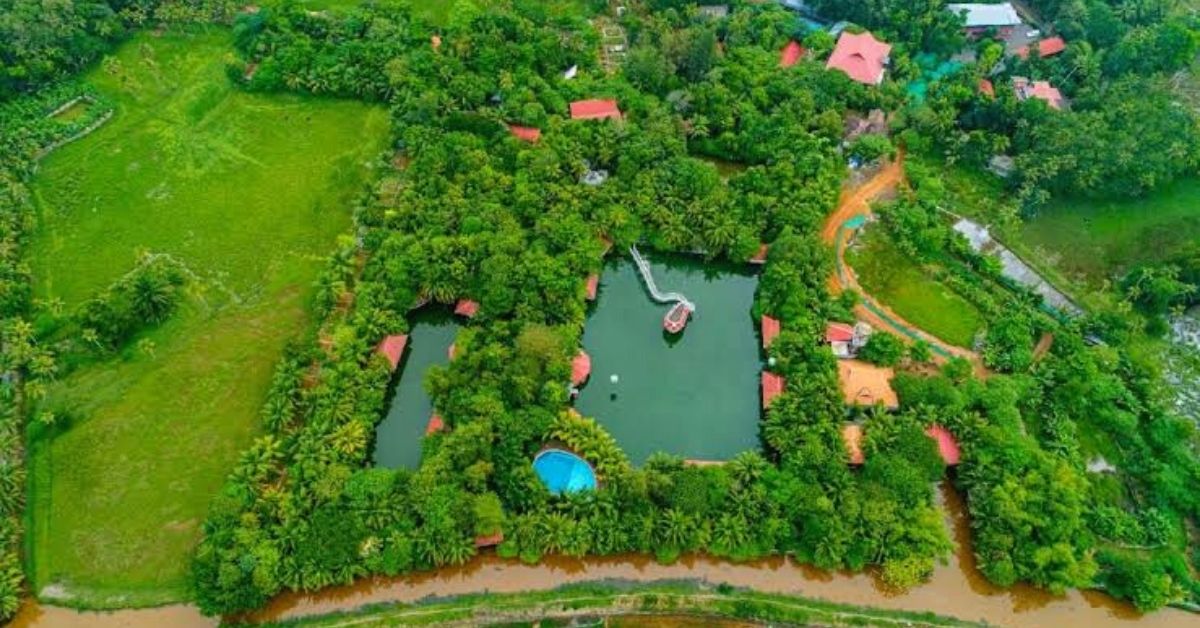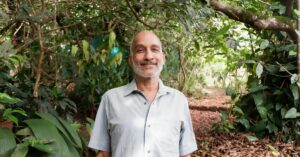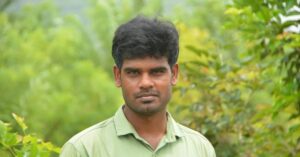Engineer Toils for 20 Yrs to Create Biodiversity Park With 4800 Plant Species
Engineer Nellikkuzhi Kuriakkose Kurian left his business in Dubai to create Mango Meadows Agriculture Pleasure Land, a human-made biodiversity park and homestay

Several forests have been axed by industries and governments alike in the name of development, affecting tribal communities as well as the native fauna and flora across the country. But one engineer from Kerala is an outlier. With money from his own pocket, Nellikkuzhi Kuriakkose Kurian has created a human-made oasis in Ayamkudy, a hamlet in the state’s Kottayam district.
For the past three years, this biodiversity park, named the Mango Meadows Agriculture Pleasure Land, has become a popular spot for visitors and tourists to rejuvenate in the midst of nature, without a speck of pollution on its premises.
When Nellikkuzi began, his intention was never to create a park for touristic purposes. “I only wanted to contribute my bit towards the environment,” he tells The Better India.
Working for a greater cause

A native of Kaipuzha, Nellikkuzi began working as an engineer supervising construction sites in Mumbai. In 1995, at the age of 26, he moved to Saudi Arabia as a site engineer with a construction company. Three years later, he moved to Dubai to work in the aluminium fabrication sector.
“I earned a handsome income and eventually used my savings to start my own company. One day, I was visiting a site where I came across a human-made oasis in the middle of the desert,” the 50-year-old recalls.
Nellikkuzi could not get the image of what he had seen out of his head. “It left a strong impression on my mind, and I realised that many more green zones could be created in India, considering the fertile soil and adequate rainfall,” he says.
To pursue the endeavour, Nellikkuzi purchased a 5-acre barren plot in Ayamkudy village in 2002, during a visit to India. “The land had four coconut trees, and the remaining site was barren. Farmers nearby claimed that nothing could grow on the infertile land,” he says.
He started investing money to plant native trees and travelled to far corners of the country. Over the years, he kept acquiring neighbouring land in patches.
But as his plantations increased, Nellikkuzi started facing a challenge. “I lived in Dubai, so maintaining the plantations in India was a difficult task. Every time I visited the land, I would see that I had lost many trees. So I appointed workers to water and maintain the plantation,” he says.
About a decade later, Nellikkuzi had acquired 30 acres of land. “By then, it had become difficult to follow up with the maintenance of such a large property. In 2009, I decided to renounce my business and dedicate my savings and life to developing the forest,” he says.
Today, the green abode hosts 4 lakh trees with 4,800 plant species, 85 vegetable varieties, and 145 fruit trees such as plum, cherry, Israel orange, and others. “The biodiversity park has all possible varieties from south and other parts of India, such as rhododendron arboreum, which grows below 5 degrees Celsius, and date palm, which usually grows around 45 to 50 degrees Celsius,” he says.

The park also hosts other rare plant varieties and trees like Aegle marmelos, considered sacred and used for medicinal purposes. “I have also planted mangrove apple, a rare species, ficus alii, which is on the brink of extinction, and other varieties like calabash or beggar’s bow, rudraksha, and more,” he says.
Nellikkuzi states that not all varieties planted by him are edible. “But my primary aim is to conserve as many plant species as possible and save them from extinction,” he adds.
The paradise is also home to four ponds, which have 64 fish varieties. “The ponds range from 50 sq feet to 150 sq feet area and are interconnected with tunnels, enabling fish to move between the ponds. This also ensures adequate water storage in all the ponds during peak summer months,” he explains.
Nellikkuzi created these ponds to generate employment opportunities for locals, he says. “Interacting with the locals helped me realise that many of them were selling fish at lower rates, and by the time it reached the market, its price had multiplied. The catch changed many hands, including traders and intermediaries, but it was the fisherman who caught the fish in the first place. But he was benefitting the least from it,” he notes.
He adds, “I felt that the fishermen’s efforts were being undervalued while the middlemen were earning a major chunk of profits. Hence, I created the ponds to enable fishermen to fish sustainably with fewer efforts and earn better profits. Today, there are no middlemen, and the fishermen earn their deserved rewards.”
Nellikkuzi’s claims his ponds help 300 fishermen earn a better income and improve their lifestyle.
One with nature
Nellikkuzi says that while he started developing the land to create a mini-forest, it eventually developed into an eco-friendly homestay.
“I built a farmhouse to monitor and maintain the plantations. However, many friends and relatives started visiting the area to seek peace and spend some time away from the city hustle,” he says.
As the number of visitors increased, Nellikkuzi made his biodiversity park public. “Financial constraints also prompted me to make it open for visitors. The floods in 2018 submerged my park, which led to losses. I sought loans to recover. I require Rs 7 lakh a month to maintain the park, and the debts have swelled to Rs 25 crore. I aim to repay them with tourism,” he says.
Besides greenery, the park offers attractions like go-karting, cable cars, a swimming pool, boating and boat safaris, ropeway, archery, a restaurant, a resort, and much more.
Nellikkuzi says that no vehicles are allowed inside the premises, and visitors roam around the campus using an e-vehicle, bullock cart, or by walking. “There is no air pollution or plastic waste in the area,” he adds.
Though he spent millions of rupees developing the land, Nellikkuzi has no regrets. “Research students and scientists across India have been visiting my biodiversity park to study the plant species. It is evidence that I have succeeded in my goal of conserving and protecting rare varieties,” he adds.
However, creating a mini-forest single-handedly has not been easy, he notes. “There was no Google or the internet to assist me in identifying rare plants and locating them. It took months for me to find and procure rare plant species. The internet came in 2004, but it was not developed and optimised like today. I toiled heavily by visiting agriculture universities and botanical gardens to collect rare species,” he says, adding that the financial constraints are other issues that continue to date.
Speaking of plans, Nellikkuzi says, “My work impressed the Gujarat Tourism and Fisheries Minister during his recent visit, and he invited me to recreate such a biodiversity theme park. The work has begun accordingly.”
Nellikkuzi feels his biodiversity park should help younger generations understand the biodiversity heritage of the country. “Many children visit the park, but they are unaware of where their food comes from. They know the delicacy served on their plate, but are less aware of the process it undergoes before reaching the plate. I aim to work closely with them to keep the biodiversity heritage alive,” he adds.
Edited by Divya Sethu
This story made me
- 97
- 121
- 89
- 167
Tell Us More
We bring stories straight from the heart of India, to inspire millions and create a wave of impact. Our positive movement is growing bigger everyday, and we would love for you to join it.
Please contribute whatever you can, every little penny helps our team in bringing you more stories that support dreams and spread hope.



















